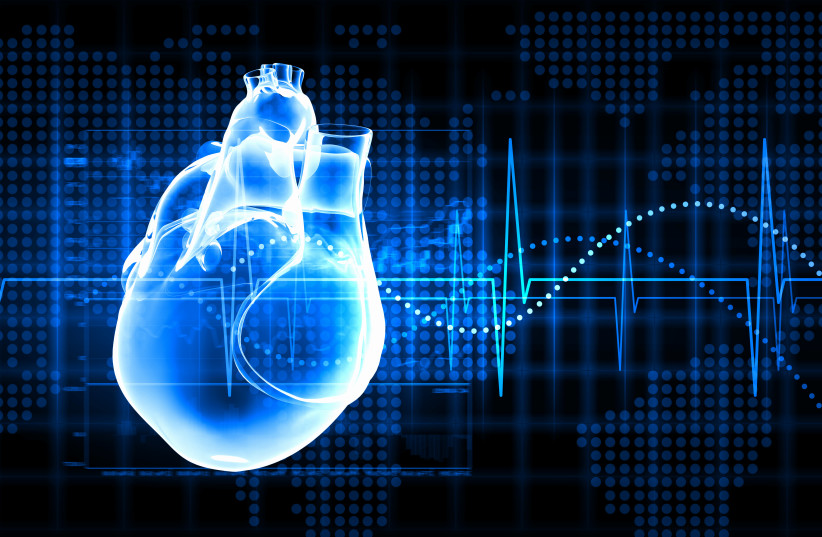Heart disease is the second leading cause of death in Israel, yet it seems that many ignore the warning signs and risk factors, until it is too late.
Prof. Eric Finkelstein, director of the catheterization unit at Surasky Medical Center, was a guest on the "Expert Clinic" podcast to explain what causes heart disease - and how the risk of heart attacks can be reduced.
"The most common heart disease, and it is also the one that puts heart diseases in the first row as causes of morbidity and mortality, is atherosclerotic heart disease," said Finkelstein, explaining that it is a disease that causes a narrowing of the coronary blood vessels, the same blood vessels that supply blood and oxygen to the heart itself, and also to the rest of the body.
The strongest risk factor for atherosclerotic heart disease is the hereditary factor.
"So for some people, even if they maintain a correct lifestyle, their risk of getting sick is still relatively high because they have a family history of the disease," he explained. However, "even people with an impressive family history can dramatically reduce the incidence of heart disease if they maintain a proper lifestyle, proper nutrition and appropriate medication."

"Prevention is without a shadow of a doubt the most important treatment for atherosclerotic heart disease," said Finkelstein. And yet, when there is a dramatic event, "it is in most cases a situation where there is a non-dramatic, non-symptomatic and apparently non-dangerous stenosis, and then one bright day, the same sclerotic plaque undergoes a small rupture, due to many and varied reasons, and that rupture is the one that gives the trigger for some kind of chain of events in which a blood clot forms inside that blood vessel, and is the one that causes that dramatic event, which we call a heart attack," he explained.
Most familiar symptom of a heart attack is pain
In cases of atherosclerotic heart disease, the most familiar symptom of a heart attack is angina - "pain that the heart transmits when it lacks oxygen, which is the expression of lack of blood. If there is a narrowing of a coronary artery, the amount of blood reaching the heart muscle is smaller, and the heart consumes what it needs, then it feels that it is lacking - and when it feels that it is lacking oxygen, it develops pain," explained Finkelstein.
In the first stage, this pain appears during exertion, because during exertion the heart consumes more blood. The pain is usually pressing, sometimes it radiates to the jaws, shoulders or teeth, but usually, at first, it appears only with exertion, and only later with rest.
"There is more awareness today, people are tested more," said Finkelstein, "but I think our big black hole is the time it takes to get medical treatment from the moment symptoms appear."
He added that "once upon a time, the treatment of a heart attack was only observation, then they invented the treatment that dissolves the clot, and then the world of catheterization appeared, in which when a patient comes to the emergency room with a heart attack, he goes straight to the catheterization. The period of time from the moment he arrives in the emergency room until I or one of my friends is inside his artery with the balloon and opened or dilated the artery - is very precious time."
But this time, called in medical jargon the door to balloon time, can be very short, and it won't help if a lot of time has passed since the patient started suffering from pain until he arrived at the emergency room. "People are in denial, they don't want to believe that they are sick. And it is very typical for the young and successful, that it suddenly made some small crack in their integrity," added Finkelstein.
Since every minute until the catheterization is critical, in cases of angina, an ambulance must be called and arrive as quickly as possible.
"If there is an aspirin pill - you should take and chew it because it thins blood, is anti-coagulant, and can sometimes prevent the final blockage of the artery," he added.
Although the last lines were very scary, it is important to know that in the field of treatment of diseases and heart events there is always progress.
"The world of treatment for atherosclerotic heart disease is constantly in motion. When I started my practice many years ago, out of 100 people who underwent catheterization and needed some kind of mechanical intervention, 75 went to bypass surgery, and 25 were solved with the help of a catheter, which at the time was only a balloon. In the years since then, the stent has developed, later the stent that secretes a drug and greatly reduces the rate of re-occlusion of the artery, newer and smaller devices have been developed, and at the same time the field of valve implantation with catheterization has developed. Currently, 95 percent of cases are resolved with catheterization, and only 5 percent go to surgery."
